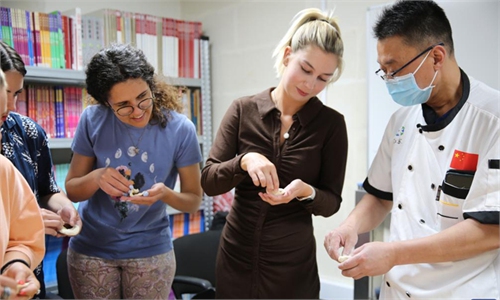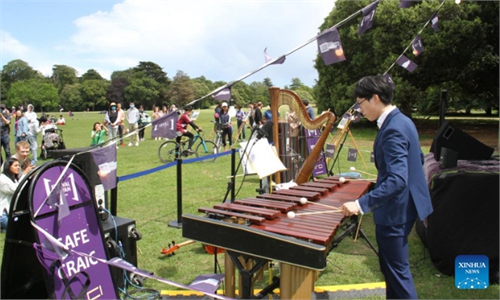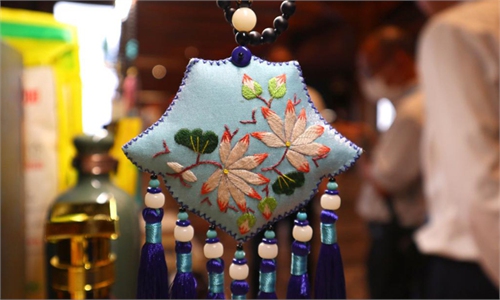ARTS / CULTURE & LEISURE
Ancient Manchu ethnic handicrafts bring new life to tradition
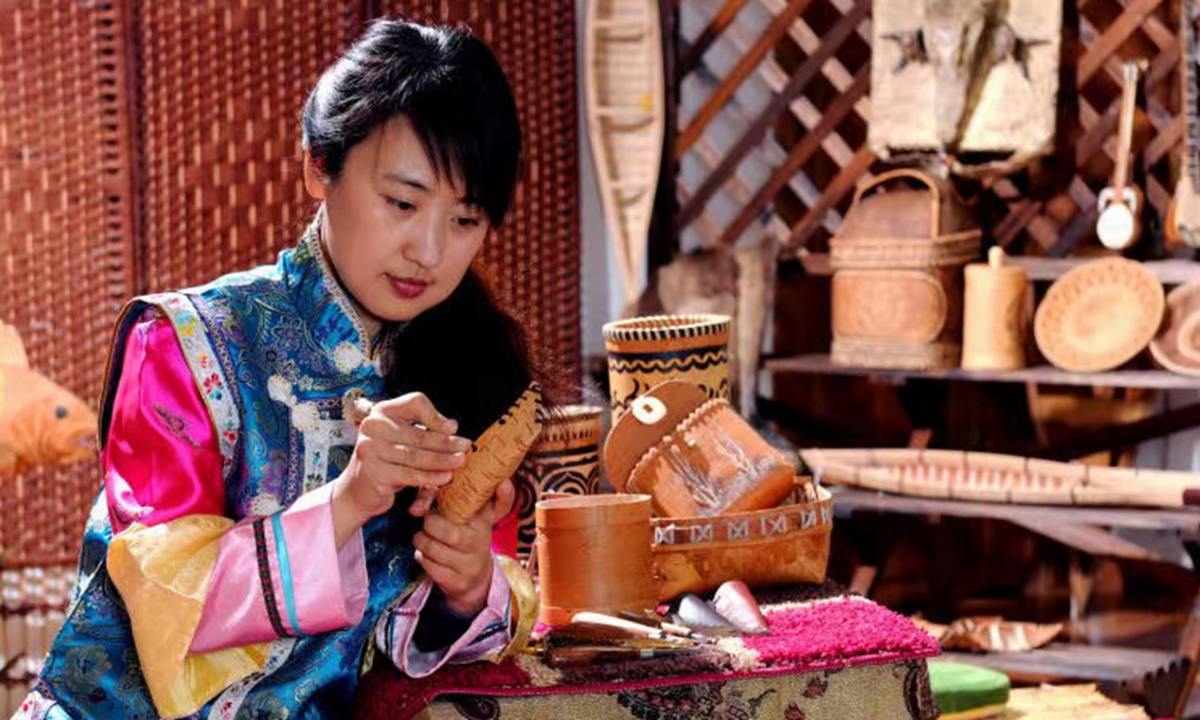
Tao Dandan works on a birch bark art piece. Photo: Courtesy of Tao Dandan
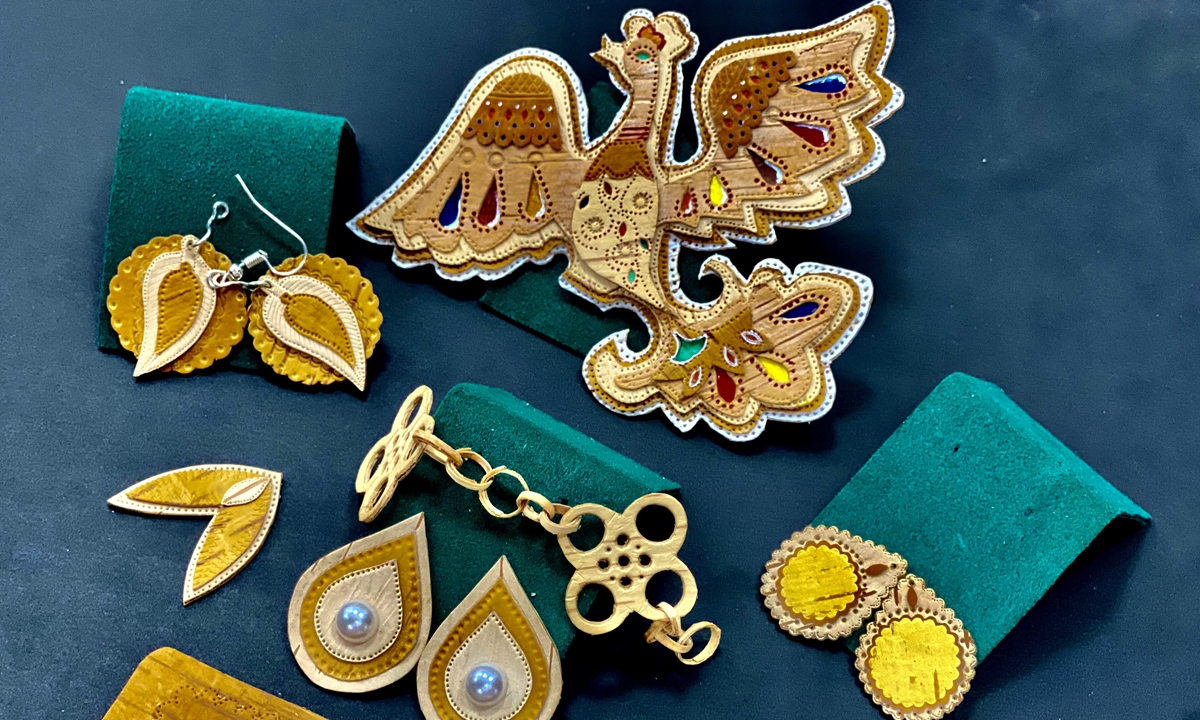
The jewels made by Tao Dandan Photo: Courtesy of Tao Dandan

The birch forest in Northeast China's Heilongjiang Province Photo: VCG
Editor's Note:Young people, especially members of Gen Z, from China's various ethnic minority groups are making themselves heard on social media. They not only display breathtaking ethnic art, local delicacies and exquisite ethnic clothing, but also present local customs such as those seen at traditional festivals. As the number of these online celebrities grows in China, they are becoming important influencers promoting trendy and cool lifestyles. The Global Times has talked to them and discussed how to improve ethnic minority regions through efforts aiming to alleviate poverty or improve people's living standards. Each of their stories constitutes a microcosm of the Chinese people's yearning for a better life and can help the world better understand the country's culture with characteristics like unity in diversity.
The natural patterns on a piece of birch bark are gradually transformed into a landscape painting containing tall trees, black dirt and a river. The finished scene is very similar to the local scenery in the hometown of Tao Dandan, the creator of the painting.
In Northeast China's Heilongjiang Province, a region that several ethnic minority groups such as the Manchu and Oroqen call home, a large residential area is covered with birch forests. For generations, the people here have been turning the bark from these trees into all kinds of items such as bags, boats or decorations.
This ancient handicraft - part of the first batch of China's national intangible cultural heritages - is being revived through the creative products and promotional methods of its Chinese inheritors.
Tao from the Manchu ethnic group is one of these inheritors. She told the Global Times that her team has planned a traveling exhibition that makes use of digital interaction technology to introduce the intangible heritage of Northeast China's ethnic minority groups, including birch bark handicrafts.
Livestreaming and video sharing platforms have also been effective tools for Tao to promote the ancient craft to younger generations.
Going with the flow
Tao, who is also a teacher of Heihe University, said that she started learning the ancient handicraft as a child. Under the influence of her father, who is also a folk craftsman, she later chose to make the art form her lifelong career.
"Birch bark products have clear regional characteristics. The handicraft skill comes from the Black Earth [a nickname for Northeast China]," Tao noted.
One of the birch bark products she is particularly good at making is birch bark paintings. Tao explained that the most important part of completing a birch bark painting is to observe the natural texture of the bark and then create paintings according to these textures.
"The natural textures are my sources of inspiration."
Besides birch bark paintings, Tao has also made items such as bags, bowls and jewelry cases using birch bark.
In 2022, more people around the country will have the chance to see Tao's works through a touring exhibition set to start in the middle of October in Nanjing, East China's Jiangsu Province.
The exhibition based on the ancient culture and hunting life of northern China's ethnic minority groups will use digital technologies such as voice activation and photo reconstruction to create a fresh experience for visitors and allow them to better understand the region's intangible heritage.
The digital technology at the exhibition can make the pictures, such as birds and flowers, on the birch bark paintings appear to move and look more vivid. The process of completing these handicrafts will be presented in details using projectors.
This is also a kind of experiment for integrally and digitally conserving intangible heritage.
New blood
Tao has created accounts on livestreaming giant Douyin and video sharing platform Bilibili. She regularly introduces birch bark handicrafts during livestreams to expand the folk art's popularity and influence.
Many young students have learned how to make their own handicrafts through her livestreams and video clips.
"Videos make education convenient. Since they are a visual medium that students can easily understand each step of the creative process even though they are sitting at home."
The inheritor said that new energy has been injected into the ancient craft after years of protection and promotional efforts. Thousands of young talents are trying their hand at birch bark handicrafts and opening their own studios.
"These studios can compete, which can make the market more energetic," Tao added.
The Oroqen people also have benefited from birch bark handicrafts. More workshops for processing birch barks have been built in Oroqen villages, thus increasing villagers' income.
Boats made of birch bark are one of the star products coming out of Oroqen township in Tahe, Heilongjiang. A 60-centimeter-long birch bark boat sells for about 500 yuan ($75) and a villager can make 10 such boats in one week.
According to the local government's statistics, there are 12 family workshops for birch bark handicraft involved in seasonal production and annual per capita income has increased by more than 3,000 yuan to 15,000 yuan.

